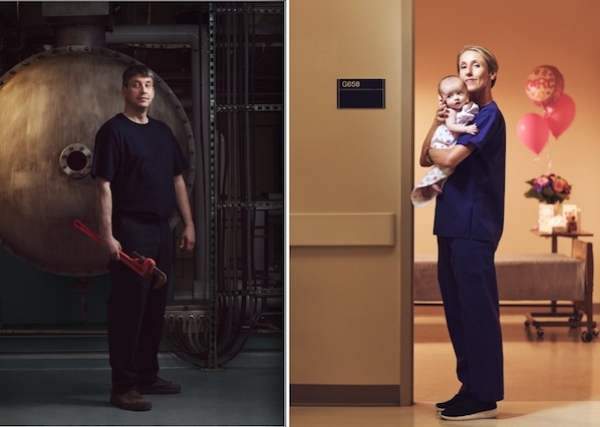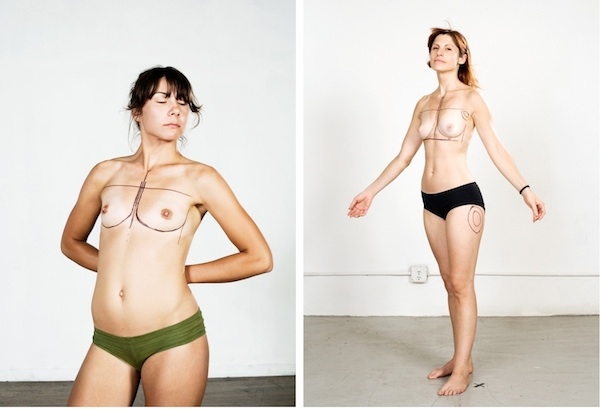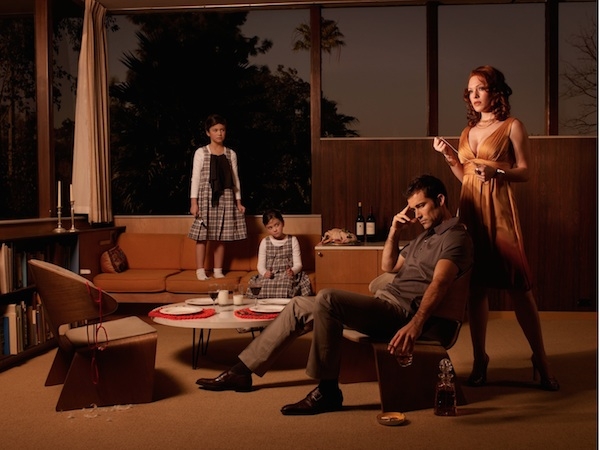Photographer Profile - Stephanie Diani: "I feel like I've had to work hard at upping my game in New York"

|
|
|
“I’d wanted to live in New York ever since I was in high school,” says Diani, who grew up in Goleta, CA, near Santa Barbara. “And as a photographer, I just felt that New York was the proving ground, and that if I didn’t try it, I’d regret it forever.”
She knew it was time to head east after deciding to let the gray come into her hair. “Everyone colors in LA, so I said, ‘I’ll go the other way and see how bad it is,’” she says. “When I saw all the gray, I thought, ‘Holy shit, I need to make this move happen now.’ I never intended to stay in LA, but I was there for 16 years.”
After a little more than a year on the East Coast, she has her feet on the ground. “The move is good,” she says. “For the first 12 months there was some nail-biting, curling-up-in-a ball moments. But I never regretted coming to New York.”
Diani and her husband finally found an apartment, no easy feat. “It has an elevator — I wasn’t going to schlep my gear up a four-story walkup,” she notes. And she’s been picking up more and more assignments, including a recent one for the Canadian Red Cross that came to her through Getty Images’s Global Assignment division.
“The job was shooting a number of people who had been doing significant humanitarian work in Canada — we wanted to represent their specialties through the locations we chose,” Diani says. Working with Marko Kokic, a creative director who’s had a long affiliation with the International Red Cross, Diani photographed 13 people in 10 days, starting in Montreal and moving on to Toronto, Vancouver and Calgary.
“I packed minimally but we still had about 250 pounds of photo gear with us, including a Canon 1Ds and Profoto B1 strobes,” she says. “And I used everything I took along.”
The images she produced are darker and moodier than you might expect from a Red Cross campaign. “That’s what they wanted, and I was really happy about that,” Diani says. "Everything now is bright and super-flashed lifestyle, which is also fun, but I love that they were interested in pictures with more drama. They make you want to know the stories about the people in the pictures.”

Diani also recently shot a retiring federal judge for the New York Times. Jobs like
that didn’t come her way in LA, she says.
“I love the variety of people I’m photographing here,” she says. “In LA, there was some variety, but a lot of what I did was entertainment-related. I still love that work, but I really enjoy meeting people who do other things, too.”
The hardest part about being in New York — beside finding apartments — is dealing with gear, she says. “In LA, it was, ‘I don’t know if I’ll need this, but I’ll throw it in the car anyway.’ But in New York that’s not what you do,” she says. “I had to compact.”
A more profound effect of her move to New York, she says, was how her style of photography has changed. “My lighting has gotten more subtle and controlled,” she says. “I feel like I’ve had to work hard at upping my game in what I can offer.”
The Need for Change
There is a possibility, of course, that it wasn’t New York that changed Diani’s photography. Rather, she might simply have been ready to make a change and needed a new city to do it in. “Or maybe it’s all just in my head,” she says.
What she is certain about is that she is working a lot harder these days. “I’m working all the time,” she says. “If I’m not shooting, I’m networking or emailing or doing tests.”
Diani picked up photography as a kid. “My older brother had a camera and whatever he did, I wanted to do,” she says. She studied archeology in college — “not particularly useful,” she notes — and then struggled to figure out what to do with her life.
“Then someone said, ‘Why don’t you do something you like to do?'” she says. She began shooting on spec for local publications — mostly landscapes for travel magazines. Then she was shooting for a local weekly newspaper and the daily Santa Barbara News-Press.

“Eventually, through talking to people, I met an LA Times photographer, and he told me about this new local section they were starting. I got hired and that’s when I moved to Los Angeles,” Diani says. That was in 1998. By 2000 she was a freelancer.
“I wanted to see how far I could go,” she says.
Beside doing entertainment photography in LA, she created a number of personal projects that reflected life in the city. One was a series of portraits of people who attended tapings of game shows; another, titled “Tribe of Impossible Perfection,” focused on cosmetic surgery.
“I had photographed a woman who told me about her plastic surgeon — it was one of those weird conversations you have with people in LA. So I met with the surgeon and asked if he’d be willing to collaborate on a photo series,” Diani says. “I had seen some procedures where the surgeon drew lines on people’s bodies, indicating where the work would be done, and I thought that was interesting — it looked like tribal markings. We put out a casting call for people who would come in and tell this plastic surgeon what they would change about their bodies. He would then mark them, and I would photograph them. That was the point of the project — we all have something about ourselves that we want worked on.”
Assessing Strengths and Weaknesses
It was another of Diani’s LA projects, a cinematic portrayal of Southern California domesticity titled “Scenes From a Marriage,” that caught of the attention of Marko Kokic, the creative director who brought her in to shoot the Canadian Red Cross story.
“When the Canadian Red Cross approached me to direct the photography for this campaign requiring on-location environmental portraiture, Stephanie’s name immediately came to mind,” Kokic says. "She is very experienced — a master at lighting and composition who can do the most challenging location work. She is also very amiable. As the subjects were not models, a photographer who could really connect with people was needed.”

“I was a little apprehensive that I wouldn't be able to create incredible magic on the Red Cross assignment, but once we got into a rhythm, it worked pretty well,” says Diani. “The look is consistent throughout the series.”
Diani says that back when she was working in LA her goals were simply “to pay the rent and and also find out what my strengths and weaknesses were, and try to find people who were interested in my strengths.”
She is still doing that, in a different setting. “It’s an ongoing process,” she says. “Every time I go out to shoot, I think, ‘What could I have done differently? And what could I do better? And what am I going to do next time?'”


